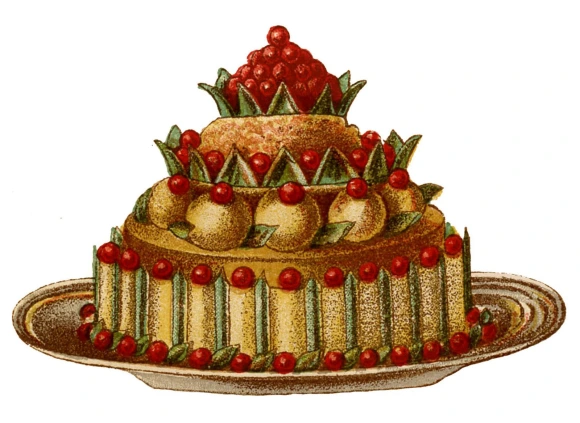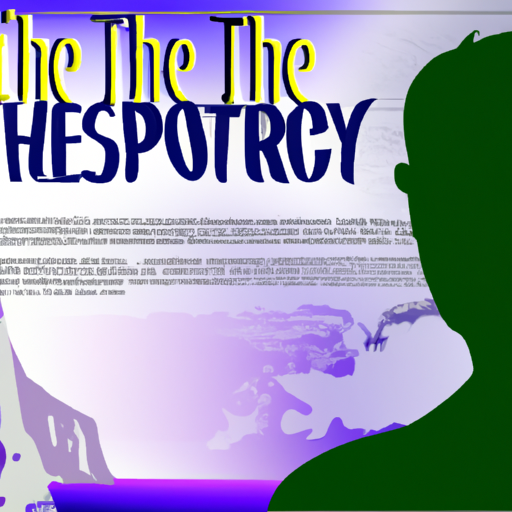What food did poor Victorians eat?
The diet of poor Victorians was characterized by simplicity and affordability. Bread, particularly plain white or brown bread, was a staple, forming the basis of many meals. Porridge, made from oats or other grains, was a hearty and economical choice for breakfast. Potatoes were a common and filling source of sustenance, often served in various forms. Vegetables like turnips and carrots, often root vegetables, were prevalent. Soups made from whatever ingredients were available, combined with simple seasonings, provided nourishment. Pottage, a thick and often vegetable-based stew, was a regular feature on the table. Gruel, a thin porridge made by mixing oatmeal with water or milk, was another common and economical option.
In a crisis, people will turn to plants once again for both food and medicine.
And there are some plants that will vanish faster than all others.
So the only way to make sure you have them when you need them is to grow them in your own backyard.
P.S. However, there is a limited number of these seeds and the demand is huge–no wonder, with all that’s happening in the world right now. Click here to see if there are any left for you!
Affordable cuts of meat, when available, were slowly cooked to tenderize and stretch their use. The diet of poor Victorians was practical, making use of readily available ingredients and cooking methods that maximized nutrition and minimized waste.
What desserts did Victorians eat?
Victorian desserts were known for their richness and variety. These sweet treats added a delightful ending to Victorian meals, with options like plum pudding, mince pies, trifle, fruit tarts, blancmange, jelly, and other indulgent creations.
Plum pudding was a quintessential Victorian Christmas dessert. It was a dense, spiced pudding that often contained a mixture of dried fruits, suet, and spices. It was traditionally flambéed with brandy or rum before serving, creating a spectacular and memorable presentation.
Mince pies, sweet pastries filled with a mixture of minced meat, suet, spices, and dried fruits, were a popular year-round dessert, often enjoyed during the Christmas season.
Trifle was a layered dessert made with sponge cake, jelly, custard, and cream. Its visual appeal and combination of textures and flavors made it a favorite.
Fruit tarts featured pastry crusts filled with fruit preserves or fresh fruit, providing a refreshing and sweet option.
Blancmange, a sweet, creamy dessert often flavored with rosewater, offered a delightful contrast to the spiced and fruity desserts of the era.
Jelly, fruit-flavored gelatin desserts, was both visually appealing and easy to prepare, making it a convenient and delicious option.
These desserts reflected the Victorian penchant for elaborate and flavorful sweets, often showcasing the creativity and culinary skills of the time.
Did Victorians eat eggs?
Yes, eggs were a fundamental part of the Victorian diet, serving as a versatile and nutritious ingredient in various dishes. Eggs were a common feature in Victorian breakfasts and were prepared in several ways. Boiled eggs were a simple yet nourishing option, and scrambled eggs offered a delightful twist with the addition of butter and seasonings. Fried eggs, often served with bacon or sausages, were a popular choice for a hearty morning meal. Eggs were also used in baking, enriching cakes, custards, and various baked goods. The versatility of eggs made them an essential ingredient in Victorian cuisine, allowing for a wide range of savory and sweet preparations.
What did the Victorians drink?
The Victorians enjoyed a diverse array of beverages that catered to different tastes and occasions. Tea was a staple in Victorian households, with a daily ritual of teatime that included various types of tea, such as black tea and green tea. Coffee was also consumed, although it was not as prevalent as tea. Cocoa, a hot chocolate-like drink, offered a comforting and sweet option, especially for children and those seeking a warm and soothing beverage.
Alcoholic beverages were a part of Victorian culture, with options like ale, beer, wine, and spirits being enjoyed by adults. These alcoholic drinks were often served at gatherings, social events, and special occasions, contributing to the convivial atmosphere of the era. Punches and cocktails, often crafted with fruits, spices, and spirits, were prepared for more festive gatherings and celebrations.
Non-alcoholic choices like lemonade provided a refreshing and non-intoxicating alternative, while fruit juices were served to cater to a variety of tastes and preferences.
Victorians, known for their social gatherings and elaborate parties, took great care in selecting the appropriate beverages to accompany their meals and festivities, reflecting the etiquette and customs of the era.
How did Victorians feed babies?
The Victorians employed various methods to feed babies, with practices varying depending on socioeconomic status and the availability of resources.
Breastfeeding was the most common and natural method for infant nourishment. Mothers would breastfeed their babies, providing them with essential nutrients and a strong emotional connection. However, not all mothers could or chose to breastfeed.
In cases where the mother couldn’t breastfeed, wet nurses were employed. Wealthier families would often hire wet nurses, who were women specifically employed to breastfeed and care for infants.
Bottle feeding was another method, with infants fed using bottles and nipples, although the sterilization and regulation of baby bottles were not as advanced as today.
In some instances, cow’s milk was introduced as a substitute for breast milk. However, cow’s milk was not an ideal choice for infant nutrition, as it lacked the essential nutrients and balance required for proper infant development.
The feeding methods for Victorian babies were diverse, but they reflected the challenges and limitations of the time, including the lack of modern feeding standards and the availability of resources.
What did Victorians put in milk?
To enhance the flavor and nutrition of milk, Victorians sometimes added various ingredients. These additions varied depending on individual preferences and traditions. Sugar was a common addition to sweeten the milk, making it more appealing, especially for children. Flavorings such as vanilla or spices like nutmeg were used to impart distinctive flavors and aromas to the milk. These enhancements turned simple milk into a more enjoyable and versatile beverage that could be tailored to individual tastes.
What did Victorians drink at parties?
Victorian parties were characterized by their diverse array of beverages, catering to different preferences and occasions. At social gatherings and festivities, tea and coffee remained popular choices, with a selection of teas, including black and green varieties. Coffee was also served, often prepared in pots or percolators. Cocoa, a comforting and sweet hot chocolate-like drink, was suitable for guests seeking a warm and soothing beverage, especially during colder seasons.
Alcoholic beverages played a significant role at Victorian parties, with options like ale, beer, wine, and spirits being enjoyed by adults. Punches and cocktails, often crafted with a combination of fruits, spices, and spirits, added a festive touch to the occasion, with various recipes and concoctions available to suit different preferences. These alcoholic drinks contributed to the convivial atmosphere and celebratory nature of Victorian gatherings.
Non-alcoholic choices such as lemonade and fruit juices provided refreshment for guests of all ages, ensuring that there were beverages to suit a variety of tastes. The assortment of drinks at Victorian parties reflected the emphasis on socializing and enjoyment, with the beverages contributing to the conviviality and festive spirit of the gatherings.
What did Victorians eat at tea time?
Tea time was a cherished Victorian tradition, offering a delightful array of snacks and beverages. During tea time, Victorians enjoyed a variety of small, delectable offerings, including cucumber sandwiches, tea cakes, biscuits, and scones.
Cucumber sandwiches were a delicate and refreshing option, featuring thinly sliced cucumbers placed between slices of buttered bread. The light and crisp texture of the cucumbers paired beautifully with the creaminess of the buttered bread, making for a perfect tea sandwich.
Tea cakes, often sweet and lightly spiced, provided a delectable companion to a cup of tea. These cakes were enjoyed by dipping them into the tea, softening their texture and enhancing their flavors.
Biscuits, both sweet and savory, were a common addition to the tea table. These small, crumbly treats came in various flavors, offering a delightful contrast of tastes and textures.
Scones were a favorite at tea time, served with clotted cream and jam. The combination of warm, freshly baked scones with the richness of cream and the sweetness of jam created a truly indulgent and quintessentially Victorian experience.
The careful selection of items for tea time allowed Victorians to savor the flavors and traditions associated with this daily ritual, fostering an appreciation for the art of tea and the joy of socializing over a shared pot of tea and delectable snacks.
What did Victorians drink for breakfast?
Victorian breakfasts were substantial and satisfying, providing a hearty start to the day. The beverages included tea and coffee, with variations in how they were served.
Tea was a staple in Victorian households, with black tea being the most common choice. It was often served with milk and sugar, providing a comforting and familiar morning ritual. Green tea was also enjoyed, adding a lighter and slightly astringent option to the breakfast table.
Coffee, although less popular than tea, was available and appreciated by those who preferred its robust flavor and stimulating qualities. It was typically served black or with cream and sugar, depending on individual preferences.
In addition to beverages, Victorian breakfasts featured a range of hearty foods. Porridge or gruel, made from oats or other grains, offered a warm and nourishing start to the day. Eggs, prepared in various ways such as boiled, scrambled, or fried, provided a protein-rich component. Bacon or sausages were common accompaniments to eggs, adding savory and salty flavors. Toast, served with butter or marmalade, offered a simple and familiar addition to the meal. Kippers, smoked herring, were a popular choice, providing a distinctive and flavorful option. Muffins or crumpets, griddled bread products, brought a touch of warmth and texture to the breakfast table. Fruit, whether fresh or canned, was also included, offering a refreshing and sweet element to the meal.
These breakfast choices reflected the Victorian emphasis on starting the day with a substantial and balanced meal, combining a variety of flavors and textures to cater to different tastes and appetites.







